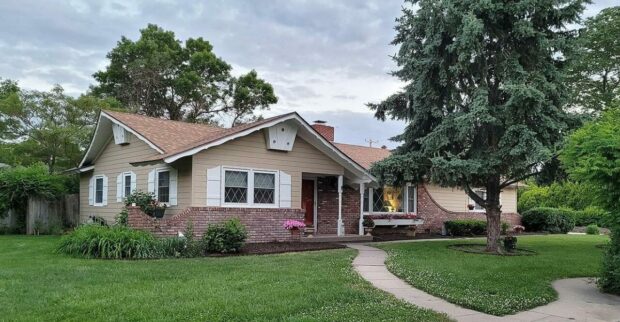HOME | ABOUT US | MEDIA KIT | CONTACT US | INQUIRE
HOME | ABOUT US | MEDIA KIT | CONTACT US | INQUIRE
THE SIMPLE FACT: YOUR HOUSING DOLLAR BUYS MORE HOME IN KANSAS. A LOT MORE. BUT COMMERCIAL REAL ESTATE PRESENTS REAL VALUE FOR BUSINESSES, AS WELL.

During America’s westward expansion in the 1860s, fueled by the Homestead Act of 1862, the population of Kansas more than tripled, from 107,000 a year before statehood to more than 364,000 in 1870, the first census that included it as a state.
The terms suggested some back-breaking work for settlers, but the pay-off after five years of toil was a 160-acre parcel to claim as their own. The value proposition of real estate in Kansas has changed over the past 160 years, but compared to the 49 other states in the union, the Sunflower State is all about affordability.
According to Zillow.com, the average price of a home in the United States is $328,745. In Kansas? It’s just $203,527—a discount of better than 38 percent. That’s not just 38 percent cheaper on the sales price; it implies lower property taxes and insurance costs as well.
Plug in the current home-buying parameters of 7.02 percent for a 30-year loan, with 10 percent down. The Kansas average would leave buyers with monthly payments of $1,571—principal, interest, taxes, insurance, and PMI all rolled into that price. At the national average for a home, those same terms would command a monthly payment of $2,379. For most families, a difference of more than $800 in the monthly housing budget would be lifestyle-changing.
Of course, the closer you get to the cultural and business hubs of the state—the Kansas City suburbs, Wichita and Topeka in particular—the more housing prices skew away from statewide averages. Johnson County, in fact, was higher than the national average, at $393,000, but Wichita was less than half that—$181,000—and was even less than the statewide average. And Topeka was the most affordable of all three markets, at $163,506.
At the bottom of the scale are the more rural, less densely populated expanses like Chautauqua County in southeast Kansas. There, the average home price early in 2022 was just $90,000.
On the commercial realty side, conditions in Kansas mirror those around the country in that it depends on which niche you’re in—office, retail, or industrial. The pandemic era clobbered office occupancy rates, which peaked at 24 percent last year in Wichita, the state’s largest city. That has pulled lease rates down more than 10 percent to about $14.33 per square foot.
Johnson County’s office vacancies, at 19.5 percent, were a bit lower than the Kansas City market overall as the COVID-19 hangover persisted. But in the hottest subsector of southern Johnson County, which has more than three times the northern half’s square footage, prices were still commanding a $1.16 premium per square foot over market-wide rates of $21.91.
With industrial, Johnson County is part of the exploding logistics scene in the Kansas City region, with millions of square feet of new construction coming online each year and being snapped up right away. With a 5.0 percent vacancy rate as 2022 ended, lease rates stood at $5.26 per square foot.
In neighboring Wyandotte County, the vacancy rate was even lower, at 4.1 percent, but lease rates were at $4.44 per square foot. And Wichita, with a considerably smaller footprint in the industrial sector (it has just 4 million square feet, compared to Johnson County’s 106.5 million), a 5 percent vacancy rate helped keep lease rates at a more robust $5.78 per square foot.